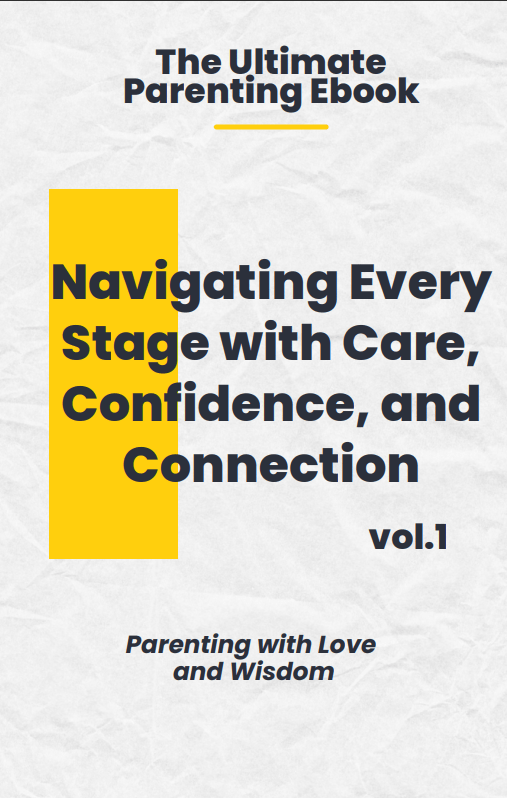After weeks of finally establishing a smooth bedtime routine, your little one suddenly starts waking up every hour, naps turn into a battle, and you’re left wondering what went wrong. Welcome to the world of sleep regression – a phase every parent knows too well.
One day your child is sleeping like a dream, and the next, it feels like you’re back to square one. Frustrating? Absolutely. But what if I told you that sleep regressions are actually signs that your child is growing, learning, and developing?
In this guide, we’ll dive deep into the real reasons behind these sudden sleep disruptions, why they happen at certain ages, and – most importantly – how to handle them with strategies that actually work.
By the end, you’ll understand that while sleep regressions can feel like a huge step backward, they’re actually part of the journey forward. Let’s get into it.

In This Blog
ToggleWhat Exactly is Sleep Regression?
Sleep regression is when a baby or toddler who previously had a stable sleep routine suddenly starts waking up during the night, resisting naps, or struggling to fall asleep. Sleep regressions are common and can be incredibly frustrating, but they’re also a normal part of development.
At What Age Does Sleep Regression Start?
Sleep regression typically starts around 4 months of age. This is when babies undergo a significant shift in their sleep cycles, transitioning from newborn sleep patterns to more adult-like cycles with lighter and deeper stages. This shift often leads to increased night waking, shorter naps, and general sleep disruption.
Sleep regressions are common at:
- 4 months: A change in sleep cycles and increasing awareness.
- 8-10 months: Often tied to physical milestones like crawling and standing, along with separation anxiety.
- 12-15 months: New skills like walking and talking can disrupt sleep.
- 18-24 months: Independence, teething, and possible night fears can cause sleep disruptions.
These phases are part of natural development, each marking a period of growth and learning.
Why Does Sleep Regression Happen?
Sleep regression is usually triggered by developmental milestones, changes in the sleep cycle, or even environmental factors. When your child is learning new skills, like crawling or talking, their brain is so active that it impacts sleep. Understanding these triggers helps us manage sleep regression in toddlers and babies with a bit more ease.
Sleep Regression by Age: What to Expect and How to Handle It
Each age comes with its own unique sleep regression challenges. Here’s what you can expect:
4-Month Sleep Regression
The 4-month sleep regression is often the first major hurdle for parents. At this age, babies transition from newborn sleep patterns to more adult-like cycles with lighter and deeper phases of sleep. This shift means they’re more likely to wake up between cycles, resulting in frequent night wakings, shorter naps, and general sleep disruption.
Signs
- Increased night wakings
- Shorter naps or refusal to nap
- Crankiness and fussiness from lack of sleep
Solutions
- Stick to a Consistent Routine: A predictable routine can help your baby recognize that it’s time for sleep. Activities like a bath, a feed, and quiet time are great signals to start winding down.
- Create a Soothing Sleep Environment: Keep the room dark, cool, and quiet. White noise can also help block out background sounds, providing a consistent environment for sleep.
- Allow Time for Self-Soothing: Try to give your baby short intervals to settle before responding. This doesn’t mean letting them cry indefinitely but giving them a brief chance to self-soothe.
8-Month Sleep Regression
The 8-month sleep regression is usually tied to exciting milestones like crawling, pulling up, and even separation anxiety. These physical and emotional developments can disrupt sleep as your baby’s mind and body are focused on mastering new skills, leading to sudden nighttime wake-ups and nap refusals.
Signs
- Refusal to nap
- Increased night wakings
- Clinginess, especially at bedtime
Solutions
- Reinforce Bedtime Routines: Bedtime routines are even more crucial during this stage, as they signal it’s time to wind down. Simple activities like reading a short book or singing a lullaby can provide comfort.
- Provide Reassurance: Since separation anxiety often peaks at this age, reassure your baby with short, calming check-ins without lingering too long.
- Encourage Self-Settling: Gradually allow your baby to fall asleep independently by reducing the time you spend in their room. Over time, this will help them learn to settle on their own.
12-15 Month Sleep Regression
Around 12-15 months, new developmental skills like walking and early language learning often impact sleep. Your baby may be so eager to practice their newfound abilities that they’re more active at bedtime, or they might experience disrupted sleep due to over-stimulation.
Signs
- Increased resistance to naps
- Restless sleep due to physical development
- Increased fussiness around bedtime
Solutions
- Maintain Consistency: Stick to the usual routine to reinforce that sleep time is rest time, even if your child seems more energetic.
- Provide Extra Comfort if Needed: Physical reassurance, like a gentle rub on the back, can sometimes help calm restlessness without fully waking them.
- Encourage Physical Activity During the Day: Providing ample time to practice new skills during the day can help reduce bedtime resistance and encourage more restful sleep.
Toddler Sleep Regression (18-24 Months)
Sleep regression in toddlers, usually around 18 to 24 months, brings new challenges as toddlers face increased independence, boundary testing, and possible nighttime fears. Teething can also become a significant factor during this phase, making sleep disruptions more frequent.
Signs
- Resisting bedtime or trying to delay sleep
- Frequent night wakings, sometimes calling out for parents
- Early morning waking
Solutions
- Set Clear Boundaries: Toddlers are testing boundaries, so maintain a consistent routine, but be firm about bedtime rules. Consistency can help them feel secure, knowing that bedtime is non-negotiable.
- Address Fears: If your toddler develops new fears, acknowledge them but avoid reinforcing them. A nightlight or a comforting toy can sometimes help alleviate fears.
- Use Gentle Sleep Training if Needed: Consider using a gradual withdrawal method where you slowly reduce your presence in the room, helping your toddler feel secure without creating dependency.
Recognizing the Signs of Sleep Regression
Knowing the signs of sleep regression can save you a lot of sleepless nights. Here’s what to look for:

- Night Wakings: Your child may wake up more frequently than usual.
- Trouble Falling Asleep: A normally smooth bedtime routine may suddenly turn into a struggle.
- Shortened Naps: Naps may become shorter or nonexistent.
- Increased Fussiness: Sleep deprivation can make babies and toddlers crankier during the day.
Differentiating Sleep Regression from Other Issues
Sometimes, what looks like sleep regression could actually be a different issue, such as illness, teething, or separation anxiety. If sleep problems persist beyond a few weeks, consult a pediatrician to rule out other potential causes.
Actionable Tips for Handling Sleep Regression
You don’t have to just wait out sleep regressions. Here are some actionable steps you can take to improve sleep patterns during these times.
Establish a Consistent Routine
Routine is one of the most powerful tools for handling sleep regressions. Keeping a consistent schedule, even on weekends, helps your child’s internal clock stay regulated.
Create a Sleep-Friendly Environment
Optimize the sleep environment to make falling and staying asleep easier:
- Keep the room dark and cool.
- White noise can block out disruptive sounds.
- Remove distractions to create a peaceful space.
Encourage Self-Soothing
Teaching self-soothing techniques is essential, especially during regressions. For example, at 4 months, gently pat your baby and allow short intervals before responding to every cry. With toddlers, encourage them to hold onto a comfort object like a blanket or stuffed toy.
Handling Night Wakings
If your child wakes at night, give them time to settle on their own before intervening. For older toddlers, use a consistent response like a brief reassurance rather than extensive comfort measures, which can unintentionally reinforce waking.
Real-Life Strategies for Parents
Sleep regression isn’t just tough on your child—it’s exhausting for you too. Here are some ways to cope:
Be Patient and Flexible
Sleep regression can test your patience, but remember that this phase is temporary. Adapt your routine to meet your child’s evolving needs without losing sight of your long-term sleep goals.
Prioritize Your Sleep Too
When your child’s sleep suffers, so does yours. Share nighttime duties with a partner if possible, and take naps whenever you can to keep up your energy.

When to Seek Help?
If your child’s sleep regression is unusually prolonged (lasting more than 4–6 weeks) or if you notice signs of a more serious sleep disorder, consult a pediatrician or sleep specialist. signs to watch for:
- Consistent, prolonged night terrors or nightmares
- Heavy snoring or trouble breathing while sleeping
- Behavioral changes due to chronic sleep loss
Early intervention can prevent sleep challenges from becoming long-term issues, so don’t hesitate to seek advice if you’re concerned.
Common Sleep Regression Questions, Answered
How long does sleep regression last?
Sleep regressions generally last between 2 and 6 weeks, depending on the child and how quickly they adjust to new routines.
Should I change the sleep schedule during a regression?
While small adjustments might be needed, maintaining a routine is crucial. Avoid drastic schedule changes as they can prolong the regression.
Is co-sleeping a solution during sleep regression?
Some parents find co-sleeping helps temporarily, but be cautious. It’s best to work toward independent sleep, especially for toddlers, as co-sleeping can make transitioning back to their own bed harder.
How does sleep regression affect naps?
Naps may shorten or become irregular. To help, maintain the same nap routine and avoid skipping naps, as overtiredness can worsen night sleep.
Conclusion
Sleep regression is a natural part of your child’s development. Although it can feel overwhelming, remember that this phase is a sign of growth. By staying consistent, setting boundaries, and giving your child the tools to self-soothe, you’re setting up good sleep habits that will last.
With a bit of patience and the right strategies, you can navigate sleep regression and come out stronger on the other side.
Hang in there—you’ve got this!
You may also be interested in : When Do Babies Start Crawling? A Complete Guide to Baby Mobility Milestones




